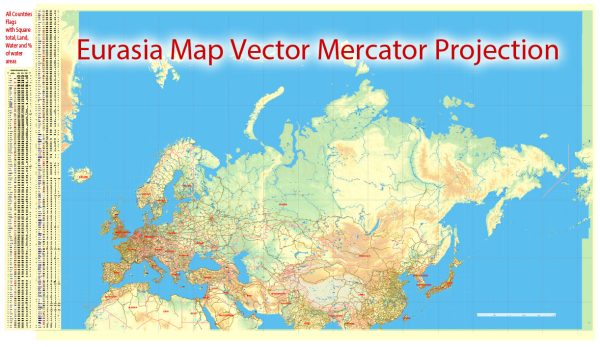Climate change affects Europe and Asia in various ways, and the impacts are diverse due to the geographical and climatic differences across the regions. Here’s a general overview of the climate change situation in both continents:
Europe:
- Temperature Changes: Europe has experienced a warming trend, with temperatures rising at a rate higher than the global average. Winters are generally becoming milder, and heatwaves are becoming more frequent and intense during the summer.
- Extreme Weather Events: Increased frequency and intensity of extreme weather events, such as floods, heatwaves, and storms, have been observed. This has led to significant economic and social impacts, affecting agriculture, infrastructure, and public health.
- Sea Level Rise: Rising global temperatures contribute to the melting of glaciers and ice sheets, leading to sea level rise. Coastal areas in Europe, particularly in the northern and western regions, face increased risks of flooding and erosion.
- Changing Precipitation Patterns: Climate change has influenced precipitation patterns, resulting in altered rainfall regimes. Some regions experience more intense rainfall and increased flood risks, while others may face drier conditions and higher risks of drought.
- Impact on Ecosystems: Shifts in temperature and precipitation patterns impact ecosystems and biodiversity. Certain plant and animal species may struggle to adapt, leading to changes in distribution and potential loss of biodiversity.
- Policy and Adaptation Measures: European countries have been actively involved in international efforts to mitigate climate change, such as the Paris Agreement. Many nations are implementing policies to reduce greenhouse gas emissions and enhance resilience to the impacts of climate change.
Asia:
- Variability in Impacts: Asia is vast and diverse, encompassing a wide range of climates from the Arctic tundra in the north to tropical rainforests in the south. Consequently, the impacts of climate change vary across different regions.
- Glacial Retreat: The Himalayan region, a critical source of freshwater for many Asian countries, is experiencing accelerated glacial melting. This has implications for water availability in downstream areas and could lead to increased risks of water scarcity.
- Extreme Events: Like Europe, Asia faces an increase in the frequency and intensity of extreme weather events, including typhoons, cyclones, floods, and droughts. These events pose significant threats to human settlements, agriculture, and infrastructure.
- Sea Level Rise: Coastal areas in Asia are vulnerable to sea level rise, with low-lying countries such as Bangladesh and small island nations facing the risk of inundation.
- Agricultural Impacts: Changes in temperature and precipitation patterns affect agriculture in various ways, impacting crop yields and food security. Some regions may experience increased productivity, while others face challenges due to changing conditions.
- Urbanization Challenges: Rapid urbanization in many Asian countries contributes to increased vulnerability to climate change. Cities are often located in coastal areas and are prone to flooding, and the growing population exacerbates the challenges of adaptation and resilience.
- Policy Responses: Many Asian countries are working on policies to mitigate greenhouse gas emissions and adapt to the impacts of climate change. Cooperation on regional and international levels is crucial for addressing transboundary challenges.
It’s important to note that these are general trends, and specific impacts can vary within each continent based on regional characteristics and vulnerabilities. Addressing climate change requires a coordinated effort at local, national, and global levels to reduce emissions and build resilience.


 Author: Kirill Shrayber, Ph.D.
Author: Kirill Shrayber, Ph.D.